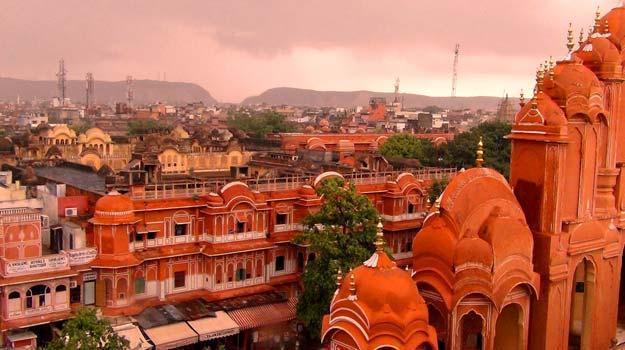The festival of lights, Diwali or Deepawali, brings cheer and warmth to Indian households as it symbolizes the victory of light (goodness) over darkness (evil).
But as I was to discover, nowhere is the “Festival of Lights” celebration as opulent as in the Pink City of India, Jaipur. Maybe because Jaipur is largely a trader’s city, and the auspicious occasion is used to honour the icon of prosperity and wealth, Goddess Lakshmi. I noticed all the Rajasthani royal lavishness coming to life during the Diwali days, with the city going berserk over sweets, lighting and festive cheer. Since times immemorial, Jaipur has followed a tradition of observing a fiveday Diwali celebration. It starts with Dhanteras on day one, Roop Chaudas on day two, Lakshmi Puja on day three, Govardhan Puja on day four and Bhai Duj on day five. I could see the aura of celebrations in every corner of the city during these days, be it the majestic Amer fort, or the busy streets of Johari Bazaar. Marigold garland vendors lined up on the pavements to sell their vibrant wares that were decked up in households in the traditional style for the festive days. The delicious aroma of sweets such as Mawa Kachori’, TilLaddoo and Piste ki Launj made one want to indulge in the rich culinary life. The quintessential markets of Nehru Bazar and Bapu Bazar bustled with vivid buntings and flashy lightings, a must-have for home décor. No Rajasthani celebration is complete without a religious and spiritual immersion, and the Diwali Maha-Arati is sure to take you on a spiritual ride. Sri Ramchandra Mandir in Chandpole Bazaar is one of the historically important temples built by the wife of ruler Sawai Ram Singh II. Dedicated to Lord Ram, it is a great place to witness the Diwali Maha Aarti. The fact that it is one of the few temples depicting “Ram Darbaar” or the “Court of Lord Ram” on its wall paintings, makes it special. But Diwali here is not just for the ardent worshippers, it holds something for everyone. In fact, the festive atmosphere takes on a grander aura with the Deepotsav festival being organized by the Rajasthan Tourism Department Corporation over the past few years. The ‘JalmahalkiPaal’ comes alive with traditional Rajasthani decoration as Diwali props, hangings, lights and rangolis woo one and all. A number of Rajasthani performances elevates the festive mood as dancers and singers rejoice to the tunes of the Kalbeliya dance, chakri dance, chari dance and other traditional dances. Jaipuri songs add a touch of melody. Amazing fireworks displays are the typicalculmination of this extravaganza, making the young and old alike truly invoke the festive mood. I have seen Diwali in many Indian cities. But what makes the festival in Jaipur stand out is the large-scale lightings and decorations. Many localities organize a contest and the best lit and best decorated residential area is even presented an award. Jaipuris put their heart and soul into decking up their homes and establishments, and this has built a tradition of “decor-watching”. Nights are a fun outing, as families flock to the best-lit monuments to enjoy the majestic illuminations. The JalMahal appears resplendent, with its shimmers reflecting off the waters of the Man Sagar Lake. The HawaMahal glows with the light of a thousand candles, a surreal sight indeed. We took a drive up to the lit-up Nahargarh fort – it offered fabulous panoramic views of the city, glittering like gold. Other must-visit landmarks to soak in the lively splendour are New Gate, Bari Chopar, Chaura Rasta, City Palace, World Trade Park, Akshardham temple and GovindDevJi temple. Shopping is an integral part of Diwali in Jaipur, which is known for its bustling markets full of life. Johari Bazaar is amongst the most popular jewellery markets, and people let loose their shopaholic side on the occasion of DhanTeras, an auspicious day for investing in gold. With the wedding season just around the corner, Diwali is a great time to indulge in one’s shopping cravings.

